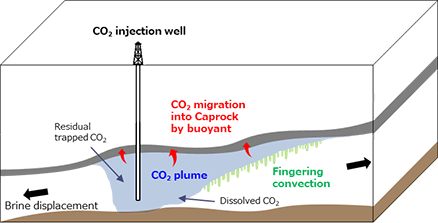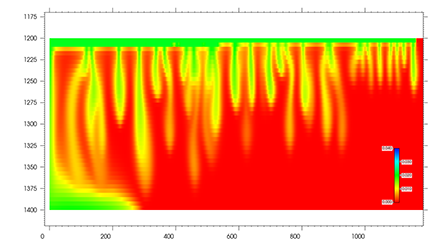Subsurface Technologies Related to Carbon Capture Utilization and Storage
Based on the technology developed in the oil and natural gas exploration and exploitation over an extensive period, we are working on developing technologies related to effective injection and secure storage of CO2 into subsurface formations and its monitoring, which are critical aspects for the successful implementation of CCS businesses. The relevant research topics are broadly classified as follows.
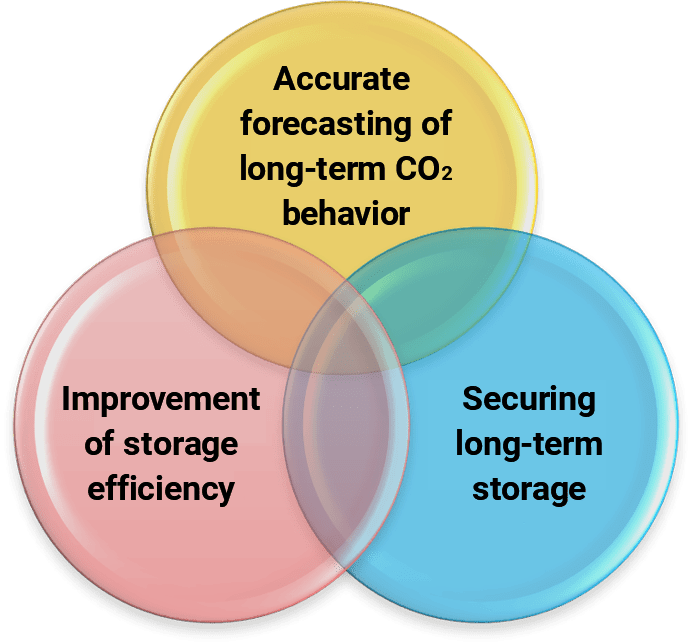
- Securing long-term storage
- Improvement of storage efficiency
- Accurate forecasting of long-term CO2 behavior
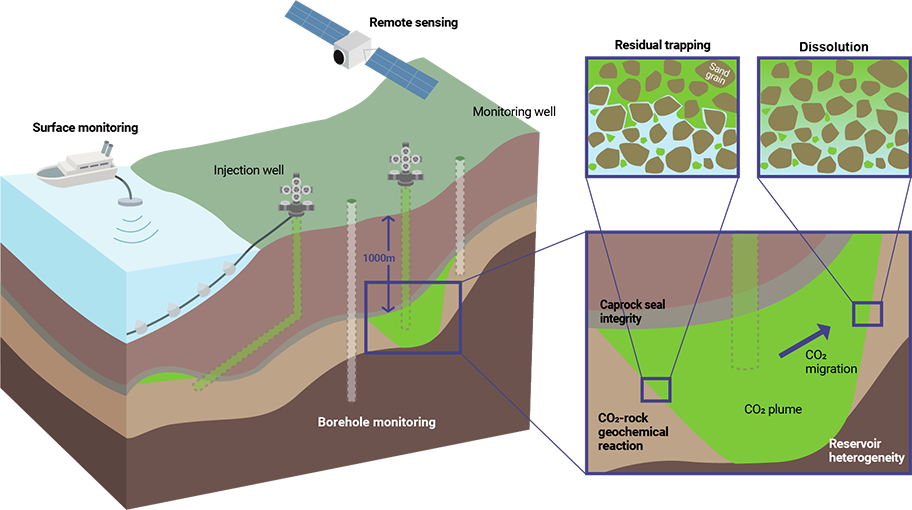
Securing Long-term Storage
Monitoring Technologies
To safely operate CCS businesses, CO2 must be stored in subsurface formations without leaking into the subsurface, near surface, or atmosphere. Thus, the surface and subsurface physical properties require regular or frequent monitoring using various geophysical and engineering technologies to detect the lateral and vertical distribution of the injected CO2. According to a report published by IEA in 2020, more than 40 monitoring technologies have been evaluated and compared. We continue to progress in industry-leading research on monitoring technologies to develop cost-effective and eco-friendly methods for future CCS businesses.
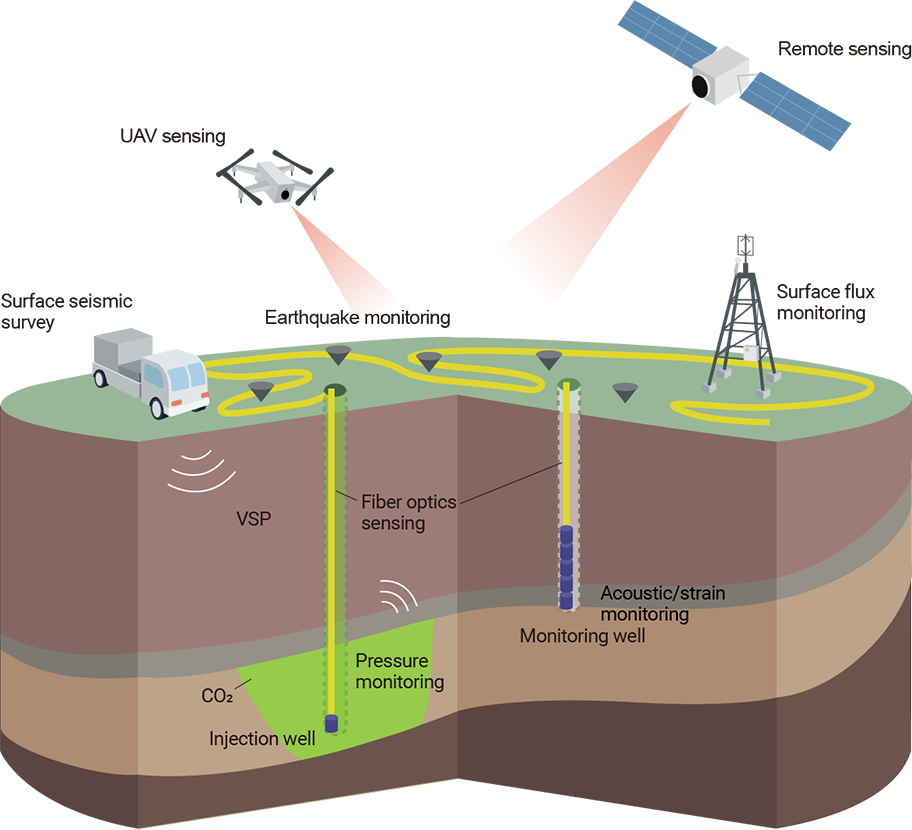
Improvement of Storage Efficiency
Geological Characterization
The geological features of a storage site are crucial to ensure secure and efficient CO2 storage, because the behavior of the injected CO2 depends on the geological characteristics of the storage reservoir, caprock, and surrounding formation. A storage site is evaluated based on geological, petrophysical, and geophysical data such as core samples, wireline logs, and seismic data. Moreover, outcrop analogs can assist in site characterization. Combining these approaches, we conduct research projects to understand the geological characteristics of storage sites and the influence of these characteristics on CO2 injection efficiency and storage security.
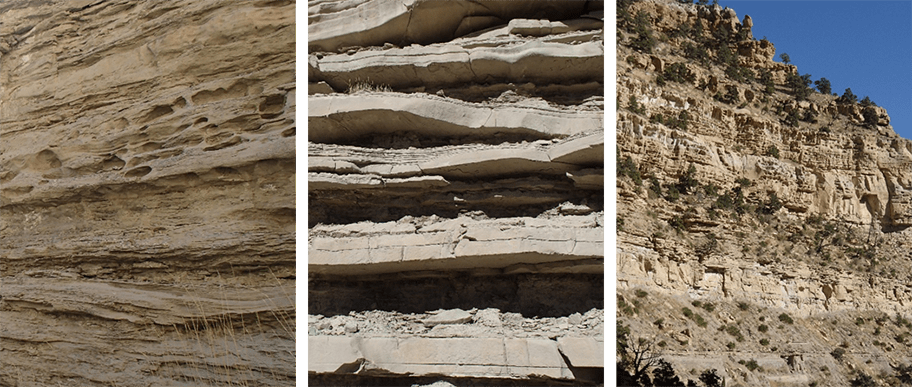
Accurate Forecasting of Long-term Behavior
Improvement of Prediction of Long-term CO2 Behavior
Engineering studies on the behavior of injected CO2 within the formation for the injection period as well as long-term post-injection period is crucial for planning a CCS operation to evaluate if the planned volume of CO2 can be safely stored in target formations for a long time. Generally, this evaluation is performed by analyzing the spatiotemporal distribution of each fluid phase (e.g., gas, liquid, or supercritical) of the injected CO2. In particular, the CO2 injected into the subsurface formations migrate, diffuse, and dissolve during injection and post-injection owing to the diference between the density, concentration, and thermodynamic nonequilibrium of the injected CO2 and formation water. The dissolved CO2 yields chemical reactions with rocks such as mineral dissolution and precipitation, thereby causing variations in the rock properties of the reservoirs and caprocks in addition to mineralizing the CO2 injected in the porous media. In forecasting the long-term behavior of stored CO2, numerical simulations are used to handle complicated behaviors and reactions, which may not be considered for the oil and natural gas development. Thus, we evaluate the approach to accurately predict these phenomena related to geological CO2 storage using numerical simulations.
